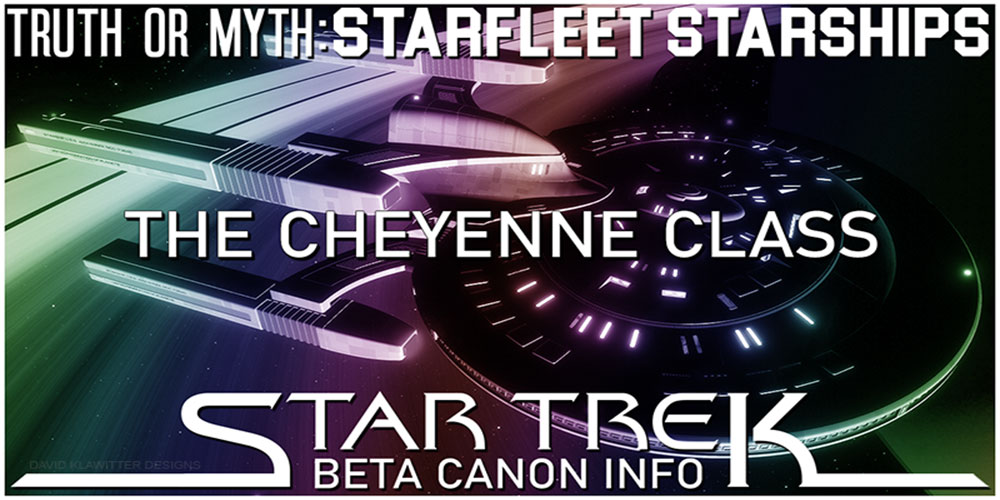Hello and welcome to another episode of Truth OR Myth Beta Canon, a Star Trek web series that dives into the history of any given topic using Beta Canon sources and my own imagination to fill in the gaps. In today’s episode we’re looking at the Cheyenne Class, as first seen in the graveyard scene of the Best of Both Worlds Part 2 in Star Trek: The Next Generation, to better understand its place in Star Trek History.
Please Note: Many fan theories have been presented over the years, about the benefits of having more than simply 2 Nacelles in a starship design. So, what I’ve done is chosen the ones brought forward the most in Beta Canon and woven them together into a narrative that I think makes the most sense.
Of course, as always, because this IS a Beta Canon video, all information re-laid should pretty much be taken with a grain of stardust, and only considered a little bit of Star Trek Fun! And so, with all that out of the way, let’s begin.
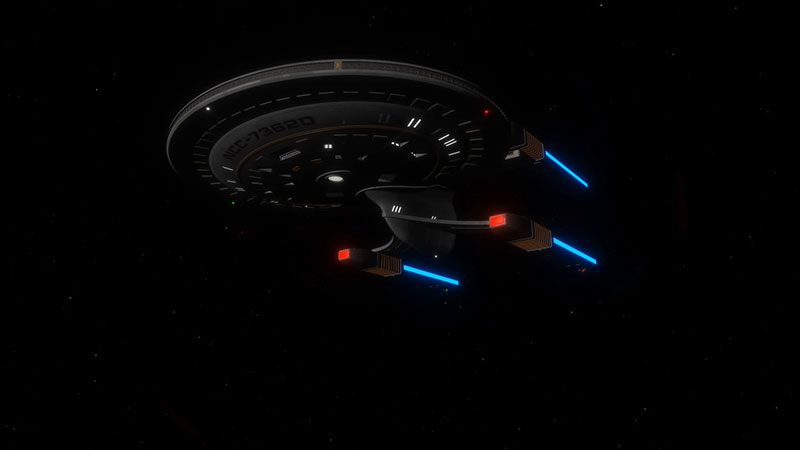
With Project Galaxy in full swing, Starfleet Command once again made the decision to try a variation on a 4 Nacelle Design, in the hopes that the end. would justify the means. And as a result, the Cheyenne Class would be born.
Starfleet Command had always had a love/ hate relationship with quad Nacelle Designs.
Having more than the traditional 2 Nacelles meant that a starship could focus its warp field, which in turn meant that said starship could travel at faster speeds.
Though this might be looked upon as a huge benefit, the truth was that any speed increases were so minute, that the resources poured into 4 Nacelle designs, I.E., 2 Additional Nacelles being constructed that could go to creating another 2 Nacelle Starship were often seen by the Federations Public as unjustified.
But for Starfleet, when an emergency occurred, where every point 1 of a warp factor could mean life or death, the decision to create these quad Nacelle designs was an easy one.
Project Galaxy would be no exception to this philosophy.
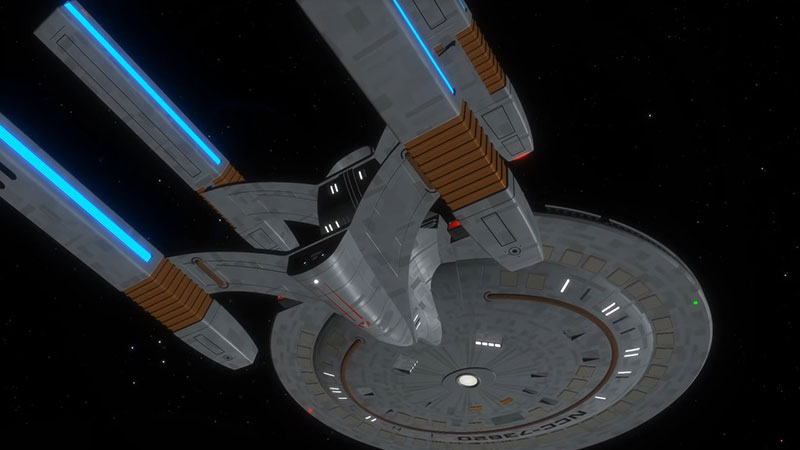
With the hope that the new Isolinear Technologies and Warp Cores developed for the project would finally justify the design to the Federations Public, Starfleet Command would order a Quad Nacelle Design to be developed by their Design Engineers, and the Cheyenne Class would be born.
Sitting at a length of approximately 394 meters, with a width of approximately 250 meters. The Cheyenne class had 20 decks and was designed to be operated by 245-320 officers and crew members depending on its current mission.
With the new style warp core having just been developed, Starfleet’s Core of Engineers had many theories as to how to better utilize its massive power increase to benefit the Starship.
As a result, the Cheyenne Class would have a standard safe cruising speed of warp factor 9 and an emergency maximum speed of warp factor 9.6. This would allow her to be an excellent vessel class for deep space exploration along with defending the Federations outermost borders.
An often overlooked, but important aspect of having starships with 3 or more warp Nacelles was their ability to travel at warp even with one of its Nacelles completely out of commission.
So, for the Cheyenne Class, this meant that should the vessel have 2 Nacelles damaged and unusable, the starship could still travel at high warp with only a small decrease in available speed.
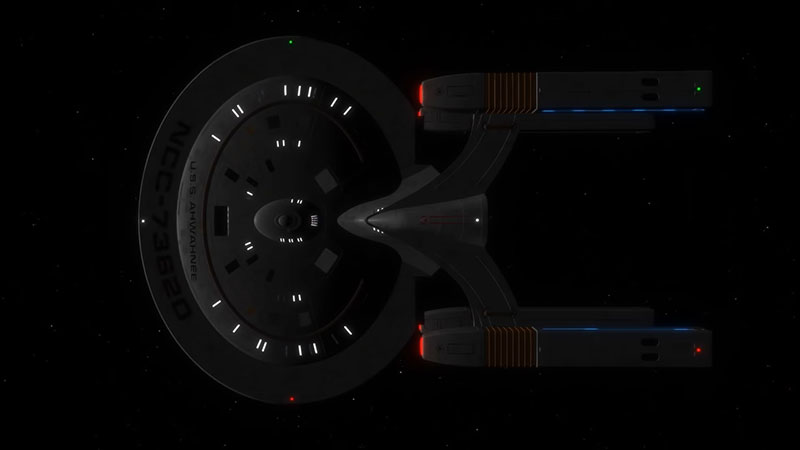
Tactically, she would be equipped with Starfleet’s New Phaser Array emitter system, a larger covering arc based on the smaller prototype Phaser Array Emitter System used on the Ambassador Class. And she would also have both forward and aft torpedo launchers utilizing the newly designed Photon Torpedoes.
Shield emitter systems were also upgraded and redefined for this class and utilizing the larger amount of power available from the new warp core greatly improved shield strength.
The primary mission profile for this class would be one of the Border Patrol of the Federations outermost areas.
As a result of this primarily tactical mission profile, Starfleet Design Engineers would add Impulse Engine to the class which provided additional manoeuvre thrust during combat.
Though having more than the traditional 2 Impulse Engines was not unusual, in a class the size of Cheyenne, it was practically unheard of…
2 enlarged Torpedo Storage Bays would also be included in this design, allowing the Cheyenne Class to Carry 200 Photon Torpedoes during standard operations, and up to 400 Photon Torpedoes during a time of war.
There would also be no large primary Deflector Dish in this Class, though a small Strip like a Secondary one would be included in the design.
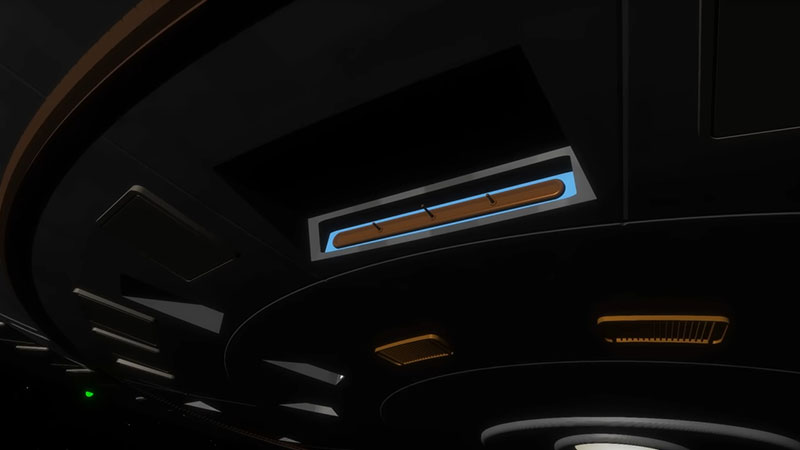
Like the Miranda, Centaur and Constellation Classes before her, primary Deflector functions would be handled by Deflector emitters placed at various locations of the starships hull, the bulk of which, however, was located on the Saucers rim.
A Primary Shuttle Bay was located at the aft upper section of the Cheyenne Classes Saucer Section, with a secondary bay located in the bottom aft section of its secondary hull.
4 Standard Transporters and 4 Cargo Transporters would provide the Class with all its transporter needs.
While smaller, tractor beam systems would allow the Cheyenne Class a limited ability to tow other starships and objects.
The USS Cheyenne was launched in the latter part of 2340 and performed quite well during her shakedown cruise, although not as well as had been expected by its design engineers.
Tactical systems, both Offensive and Defensive would perform above expectations after a few minor settings in adjustments were made.
The only real problem with the design had been with its warp-speed tests.
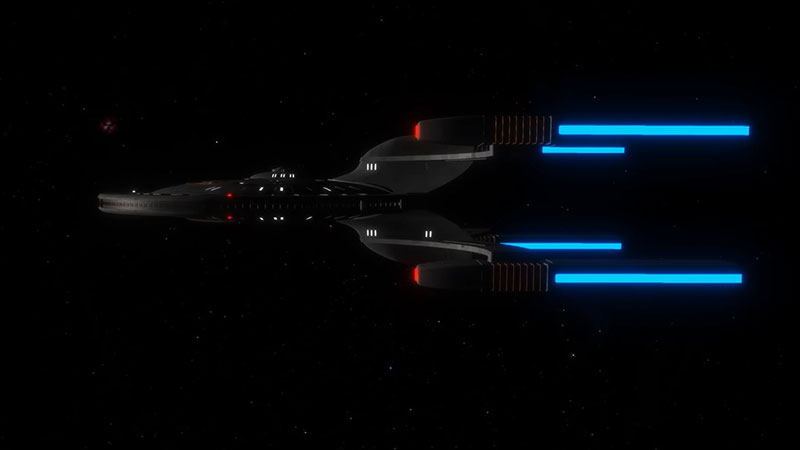
During trial runs, the Cheyenne Class performed well up to a warp factor of 8, but once passed 8 the starship began to shake, and by the time she reached warp factor 9, the ship was violently shaking and the Structural Integrity Field System, along with the Inertial Dampeners were having real problems stabilizing the starship.
Put back into dry dock to attempt to solve the problem, Starfleet’s engineers were at a loss. On paper everything looked fine, with computer simulations backing up what warp field theorists had been hypothesizing since the class had begun its design phase, there was no reason why the ship class shouldn’t have worked out as planned, yet it simply didn’t.
Redeveloping and re-engineering the Structural Integrity field and the Inertial Dampeners for the class did end up solving the problem to Starfleet liking, allowing the ship to have a warp factor of 9 as its emergency speed, albeit still rather shaky when reaching that velocity.
Though the intent for Starfleet was to justify yet another 4 Nacelle Design, a goal which seemed unattainable, the changes to the design allowed Starfleet to begin full, but limited production on the class.
But this outcome was not acceptable to a young junior member of the Daystrom Institute, and she would take up the Challenge and finally solve the problem that had plagued the Cheyenne Class during its initial launch.
Dr Leah Brahams realized that the problem with the new warp core systems had to do mostly with the Subspace Field Generators, Dilithium Crystal Servo Subsystems, and a Plasma Resonance.
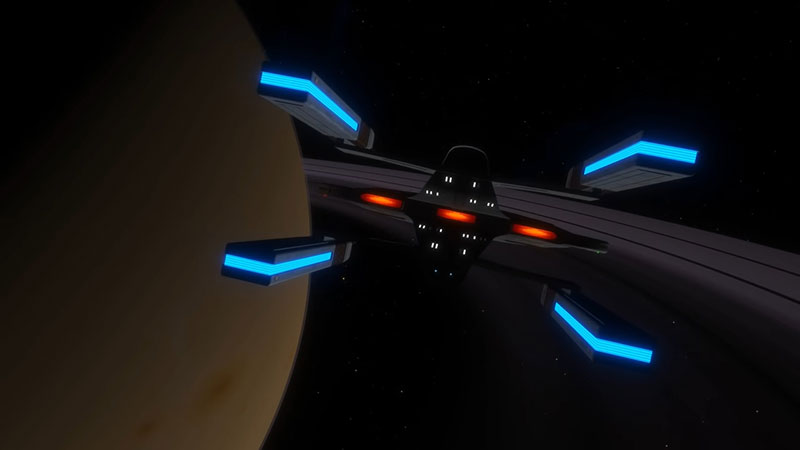
So, she set herself the task of fixing these problems and did so in relatively short order.
Calling the USS Cheyenne back to Utopia Planitia, the Cheyenne was equipped with the newly designed Brahams devices and when testing began, the Cheyenne Class was finally able to reach warp 9 with no problems whatsoever and could hold warp 9.6 with far less shaking than had ever been previously experienced.
As a result of her ingenuity, Leah Brahams would be promoted to the team developing and constructing the Galaxy Class, where she would be hailed as one of the leaders in warp field theory and its applications within the Federation.
The Cheyenne Class would go on to prove herself time and time again, though mostly in combat, as most of the Cheyenne Classes constructed by Starfleet were assigned to patrol duties along the Cardassian, Breen and Xenkethi Borders.
It was generally believed that classes such as the Cheyenne Class, would lead the Federation through to the 25th century, however, this would not come to be.
With the Borg attack at Wolf 359, Starfleet would re-double its efforts in designing new starship classes and developing new technologies to defeat this seemingly unstoppable foe. With the breakthrough in bio-neural circuitry, which overnight made Isolinear Technology obsolete, Starfleet’s Core of Engineers would redesign Starfleet’s aesthetics to a sleeker, more arrowhead design, rendering these older bulkier looking designs rather unpopular.
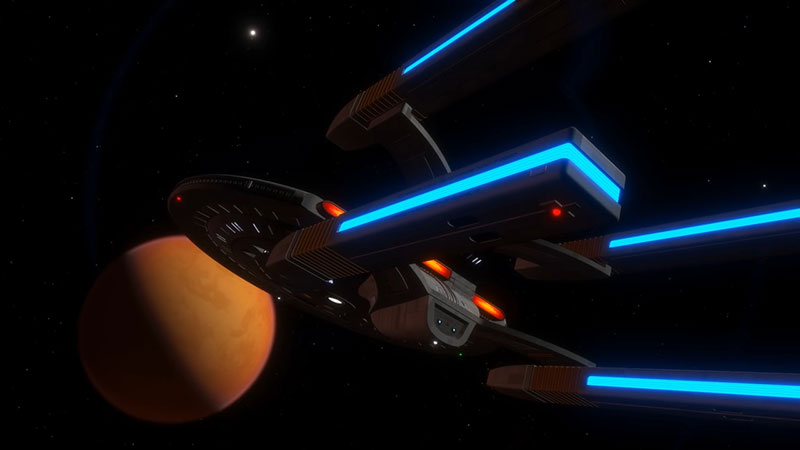
Starfleet could have simply upgraded the technology in the Cheyenne Class but chose not to as times in the United Federation of Planets was changing and the newer classes seemed to revitalize Starfleet’s image within the Galaxy.
By 2380 most of the Cheyenne Class had been decommissioned with a few being left around for transport duty.
But, when The Romulan Star Empire requested aid from the United Federation of Planets to assist in a mass evacuation of Romulus and its surrounding systems, Admiral Jean-Luc Picard convinced Starfleet to mobilize a massive rescue armada of ten thousand warp-capable ferries which were assembled over Mars.
And Starfleet Command began to pull all starships they could out of mothballs, upgrading and doing quick refits of these decommissioned starships, to make Picard’s fleet a reality, this included several Cheyenne Class starships.
However, when the Synths attacked Utopia Planitia in 2385, all these remaining Cheyenne Class starships would be destroyed, and Mars itself would be set ablaze, effectively ending the Cheyenne Classes history, in one fell swoop.
A truly sad end of a class that represented a short but defining era in Starfleet history. And although the Cheyenne Class performed well during its short lifetime, like so many starship classes of Project Galaxy, it has become a forgotten page in starship design texts, nevertheless, the Cheyenne Class HAS certainly earned its place in Starfleet history…
What to help the channel justify Quad Nacelle starship designs? Then just click HERE to become a channel Patron…
Watch The Latest Truth Or Myth Below
Thank you for watching today’s episode of Truth or Myth Beta Canon, what do you think of the Cheyenne Class, and the historical narrative that I’ve created here.
Do you want to see more videos like this one? Well leave your comments in the section below and don’t forget to like the video and subscribe to the channel.
Thanks again for watching, Live long and prosper…

